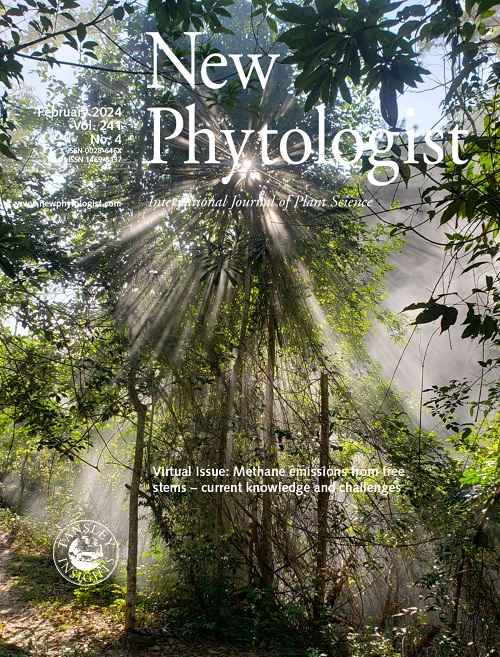SlTCP24和SlTCP29通过与SlAS2相互作用和激活SlCKX2的转录协同调节番茄复叶发育
IF 8.1
1区 生物学
Q1 Agricultural and Biological Sciences
引用次数: 0
摘要
复叶的复杂性主要源于叶片发育过程中小叶的起始和排列。然而,复叶发育的分子机制仍然是一个核心研究问题。SlTCP24和SlTCP29是两种具有保守TCP基序的植物特异性转录因子,它们协同调节番茄复叶的发育。当它们同时被敲除时,小叶的数量显著增加,叶片的形状变得更加复杂。SlTCP24和SlTCP29可以形成同源二聚体和异二聚体,并且这种二聚作用受到叶极性调节因子SlAS2的阻碍,该调节因子与SlTCP24、SlTCP29相互作用。SlTCP24和SlTCP29可以与SlCKX2启动子的TCP结合顺式元件结合并激活其转录。具有SlTCP24和SlTCP29双基因敲除的转基因植物具有较低的SlCKX2转录水平和较高的细胞分裂素水平。这项工作鉴定了番茄复叶发育的两个关键调控因子及其参与细胞分裂素代谢途径的靶向基因。在此基础上,提出了一个复叶发育调控模型。本文章由计算机程序翻译,如有差异,请以英文原文为准。
SlTCP24 and SlTCP29 synergistically regulate compound leaf development through interacting with SlAS2 and activating transcription of SlCKX2 in tomato
- The complexity of compound leaves results primarily from the leaflet initiation and arrangement during leaf development. However, the molecular mechanism underlying compound leaf development remains a central research question.
- SlTCP24 and SlTCP29, two plant-specific transcription factors with the conserved TCP motif, are shown here to synergistically regulate compound leaf development in tomato. When both of them were knocked out simultaneously, the number of leaflets significantly increased, and the shape of the leaves became more complex. SlTCP24 and SlTCP29 could form both homodimers and heterodimers, and such dimerization was impeded by the leaf polarity regulator SlAS2, which interacted with SlTCP24 and SlTCP29.
- SlTCP24 and SlTCP29 could bind to the TCP-binding cis-element of the SlCKX2 promoter and activate its transcription. Transgenic plants with SlTCP24 and SlTCP29 double-gene knockout had a lowered transcript level of SlCKX2 and an elevated level of cytokinin.
- This work led to the identification of two key regulators of tomato compound leaf development and their targeted genes involved in cytokinin metabolic pathway. A model of regulation of compound leaf development was proposed based on observations of this study.
求助全文
通过发布文献求助,成功后即可免费获取论文全文。
去求助
来源期刊

New Phytologist
PLANT SCIENCES-
CiteScore
17.60
自引率
5.30%
发文量
728
审稿时长
1 months
期刊介绍:
New Phytologist is a leading publication that showcases exceptional and groundbreaking research in plant science and its practical applications. With a focus on five distinct sections - Physiology & Development, Environment, Interaction, Evolution, and Transformative Plant Biotechnology - the journal covers a wide array of topics ranging from cellular processes to the impact of global environmental changes. We encourage the use of interdisciplinary approaches, and our content is structured to reflect this. Our journal acknowledges the diverse techniques employed in plant science, including molecular and cell biology, functional genomics, modeling, and system-based approaches, across various subfields.
 求助内容:
求助内容: 应助结果提醒方式:
应助结果提醒方式:


